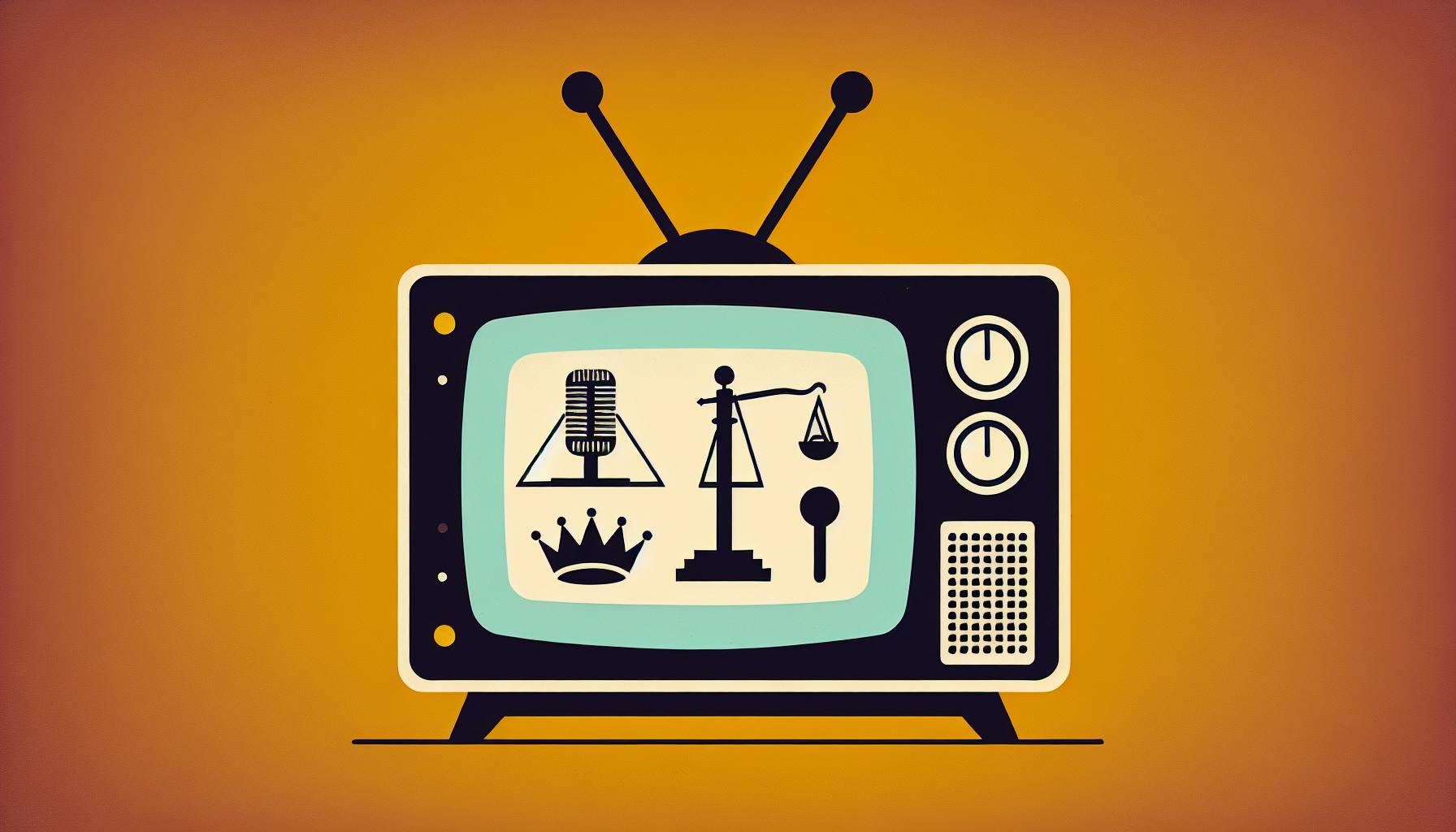Campaign finance reform is a complex issue that many would agree requires careful consideration to balance participation and influence.
This article will provide an in-depth, nonpartisan explanation of the Bipartisan Campaign Reform Act, including its key provisions, legal journey, unintended consequences, and impact on campaign finance today.
You will gain insight into issues like soft money vs. hard money, the rise of super PACs, disclosure and reporting requirements, and the future of public campaign financing.
Introduction to the Bipartisan Campaign Reform Act
The Bipartisan Campaign Reform Act (BCRA), also known as the McCain-Feingold Act, was passed in 2002 to regulate the financing of federal election campaigns in the United States. This introductory section will provide background on the law, including the historical context that led to its passage, its key provisions, and subsequent legal challenges.
Historical Context: The Need for Reform in Campaign Funding
In the decades leading up to the BCRA's passage, there were growing concerns over "soft money" contributions and "issue advocacy" spending. Soft money referred to funds donated to political parties that were not subject to federal limits and disclosure requirements. Issue advocacy ads promoted or attacked candidates on policy issues without explicitly calling for their election or defeat. Critics argued these unlimited, often undisclosed funds undermined campaign finance regulations.
There were calls for reforms to close loopholes and curb the influence of money in politics. Supporters of reform argued it was needed to prevent corruption, increase transparency, and restore public confidence in the political system.
BCRA Definition and Core Provisions
The BCRA banned national parties from raising or spending soft money in federal elections. It prohibited corporations and unions from funding issue ads close to elections. Other key provisions included increased contribution limits for parties and candidates as well as disclosure requirements for donations.
By banning soft money and regulating issue ads, the BCRA aimed to curb unregulated spending and special interest influence over elections. It forced more campaign funds into "hard money" subject to federal rules.
Constitutional Principles and the BCRA
As a far-reaching campaign finance law, the BCRA has faced questions about its consistency with First Amendment free speech principles. Supporters argued it prevents corruption and protects the integrity of elections. Critics claimed it suppresses political speech and association rights.
Balancing free speech, transparency, and fairness has made campaign finance a complex, often controversial issue. Reasonable people disagree on the appropriate approach under the Constitution.
The BCRA's Journey Through the U.S. Supreme Court
The BCRA faced legal challenges soon after its passage. In the 2003 case McConnell v. FEC, the Supreme Court upheld key provisions as constitutional. However, later decisions like 2010's Citizens United v. FEC overturned parts of the law related to corporate political speech.
While aspects of the BCRA remain intact, subsequent rulings have weakened its scope. Debates continue over how best to balance free speech rights and fair, transparent campaign funding. The journey of clarifying the law through the courts is ongoing.
What did the Bipartisan Campaign Reform Act banned?
The Bipartisan Campaign Reform Act (BCRA), also known as the McCain-Feingold Act, banned national party committees and their agents from soliciting, receiving, directing or spending any funds that are not subject to the Federal Election Campaign Act's (FECA) limits, prohibitions and reporting requirements.
Specifically, the BCRA banned:
-
"Soft money" donations - unlimited donations to political parties for party building activities. This money often influenced federal elections.
-
Issue ads - ads that did not expressly advocate for a candidate but promoted certain issues close to elections. These ads were seen as ways to influence elections without being subject to regulations.
-
Coordination between candidates and outside groups on issue ads - the BCRA banned this to prevent collaboration on ads intended to influence elections.
So in summary, the BCRA banned unlimited soft money donations to parties, issue ads before elections, and coordination between candidates and outside groups on those issue ads. This was done to limit the influence of money in politics from groups not directly associated with candidates.
The bans were controversial and parts were struck down by the Supreme Court in later decisions. But the BCRA represented an attempt to reform campaign finance laws to reduce influence of money in elections.
What are campaign reform laws?
Campaign reform laws refer to legislation that aims to regulate various aspects of campaign financing and spending. Some key examples of campaign reform laws in the United States include:
-
The Bipartisan Campaign Reform Act (BCRA) of 2002, also known as the McCain-Feingold Act, banned soft money donations to political parties and placed limits on electioneering communications. It aimed to curb the influence of big money in politics.
-
The Federal Election Campaign Act (FECA) of 1971 required fuller disclosure of contributions and expenditures and set limits on contributions by individuals, political parties and PACs. It also established public financing for presidential campaigns.
-
Citizens United v. FEC was a landmark 2010 Supreme Court case that ruled the First Amendment prohibits the government from restricting independent political expenditures by corporations and unions. This opened the floodgates to unlimited corporate and union spending in elections.
In summary, campaign reform laws attempt to regulate various aspects of campaign financing like setting limits on contributions and expenditures or requiring transparency through disclosure rules. Supporters argue they are necessary to curb corruption and undue influence in politics, while opponents contend they infringe on free speech rights.
What changes did the Bipartisan Campaign Reform Act BCRA of 2002 make to the limits on how much an individual can donate to a federal political campaign?
The Bipartisan Campaign Reform Act (BCRA) of 2002, also known as the McCain-Feingold Act, made several changes to campaign finance laws in the United States. Some of the key changes related to individual campaign contributions include:
-
Indexing contribution limits for inflation - The BCRA set the limit on individual contributions to federal candidates at $2,000 per election, but this amount is adjusted for inflation at the start of each new election cycle. This allows the limits to keep pace with rising costs over time.
-
Increased contribution limits - The BCRA slightly increased some individual contribution limits compared to the previous Federal Election Campaign Act (FECA). For example, the limit on individual contributions to national party committees was raised from $20,000 to $25,000 per year.
-
Banned soft money contributions - The BCRA banned "soft money", which refers to unlimited contributions made to political parties for general "party-building" activities rather than directly supporting candidates. This closed a major loophole that allowed individuals to contribute much more than the standard limits.
So in summary, while the BCRA introduced more indexing and some modest increases to individual limits, the overall impact was to restrict and regulate campaign contributions through banning soft money donations. This was an attempt to reduce the influence of money in politics coming from wealthy individuals and organizations.
sbb-itb-585a0bc
What did the Bipartisan Campaign Reform Act eliminate quizlet?
The Bipartisan Campaign Reform Act (BCRA), also known as the McCain-Feingold Act, was passed in 2002. One of the key things it eliminated was soft money donations to national political parties.
Soft money refers to funds donated to political parties that are not subject to federal limits and disclosure requirements. Before BCRA, soft money enabled corporations, unions, and wealthy individuals to make unlimited donations to the national parties.
BCRA banned national parties from raising or spending soft money. This removed a major loophole that allowed unregulated money to influence federal elections. Parties could no longer use soft money for things like "issue ads" that supported or attacked candidates right before elections.
So in summary, the Bipartisan Campaign Reform Act eliminated:
- Soft money donations to national political parties
- Unlimited corporate, union, and individual donations to the parties
- The parties' ability to spend soft money on electioneering communications
This was seen as an important step in reforming campaign finance laws in the United States by reducing the influence of big money donors in federal elections. However, the impact of BCRA has been limited by subsequent Supreme Court decisions like Citizens United.
The Mechanics of Campaign Finance Under the BCRA
The Bipartisan Campaign Reform Act (BCRA) was passed in 2002 to regulate various aspects of campaign financing and spending. The law aimed to close loopholes in existing legislation and curb the influence of "soft money" donations.
Hard Money vs. Soft Money: BCRA's Distinctions
The BCRA made important distinctions between "hard" and "soft" money:
-
Hard money refers to direct campaign contributions made to a candidate or party. These donations are limited and regulated.
-
Soft money refers to unlimited funds donated to parties for general "party-building" activities. Soft money enabled interest groups to circumvent regulations.
The BCRA banned national parties from raising or spending soft money. This removed a major loophole in campaign finance laws.
BCRA's Impact on Political Parties and Campaign Funding
By banning soft money donations to the national political parties, the BCRA aimed to reduce the influence of wealthy donors and special interest groups.
However, critics argue it impacted smaller political parties more severely by limiting their fundraising capabilities. The law also increased the demand for other channels of campaign funding.
Contribution Limits: Balancing Influence and Participation
The BCRA increased certain federal contribution limits to account for inflation. This enabled more citizens to donate.
However, some experts argue that higher limits disproportionately benefit wealthy donors. Contribution limits attempt to balance free speech rights with preventing corruption.
The Role of the Federal Election Commission (FEC) in Enforcing BCRA
The BCRA expanded the authority of the FEC to enforce campaign finance laws. The FEC oversees implementation of BCRA regulations including:
- Monitoring compliance with contribution limits and reporting requirements
- Investigating violations and issuing penalties
- Providing guidance on BCRA rules
Critics argue that the FEC has been limited in its enforcement capabilities due to partisan gridlock among commissioners.
Campaign Expenditures and Advocacy in the Post-BCRA Era
The Bipartisan Campaign Reform Act (BCRA) aimed to restrict spending by outside groups to influence elections. However, subsequent court decisions have reshaped these provisions.
Electioneering Communications: BCRA's Approach to Campaign Spending
The BCRA defined a new category called "electioneering communications" - broadcast ads referring to federal candidates within 30 days of a primary or 60 days of a general election. These communications were required to be financed with hard money subject to federal contribution limits.
Express Advocacy vs. Issue Advocacy Under BCRA
The BCRA attempted to restrict "issue advocacy" - ads that avoid express calls to vote for or against candidates. However, the Supreme Court narrowed the BCRA's definition of electioneering communications to only cover "express advocacy" in FEC v. Wisconsin Right to Life.
Disclosure and Reporting: Transparency in Campaign Spending
The BCRA mandated more frequent disclosure reports on electioneering communications and required sponsors of these ads to be revealed in the ads themselves. This aimed to increase transparency around political spending.
The Shifting Landscape Post-Citizens United v. FEC
In Citizens United v. FEC (2010), the Supreme Court overturned bans on corporate and union independent political expenditures. This opened the floodgates for unlimited soft money spending by outside groups like Super PACs. Disclosure remains mandated but tracing obscure funding sources remains challenging.
Exploring Public Financing in the BCRA Framework
Public financing of campaigns aims to reduce the influence of large private donors on elections. The Bipartisan Campaign Reform Act (BCRA) established a voluntary system for public funding of presidential campaigns.
Public Financing of Campaigns: An Overview
The public financing system provides federal matching funds for small individual contributions to participating presidential candidates. In the general election, it offers a specific amount of public funds to major party nominees if they agree to spending limits. This aims to allow candidates to run competitive campaigns based on small donations rather than reliance on large private contributors.
Matching Funds and Spending Limits: The Trade-offs
Participating presidential candidates must abide by state-by-state spending limits in the primaries. In exchange, they receive federal matching funds for individual donations up to $250. This incentivizes candidates to pursue small grassroots donations. However, some critics argue the spending limits are too low, deterring participation.
Evaluating the Impact of Public Financing on Presidential Elections
In recent decades, most major party nominees have opted out of public financing in the general election. With no spending limits, they can raise and spend unlimited private funds. Supporters of public financing argue this increases the influence of wealthy donors. However, participation in the primary matching funds program has endured.
The Future of Public Financing in Campaigns
There are legislative proposals to update the system by raising spending limits and matching small donations at a higher rate. However, public financing faces skepticism from those who favor fewer campaign finance regulations. The viability of public financing depends on building political will to reduce reliance on large private donors.
Conclusions: Assessing the BCRA's Legacy and Future
The Bipartisan Campaign Reform Act (BCRA) of 2002, also known as McCain-Feingold Act, brought significant changes to campaign finance laws in the United States. As we reflect on its impact over the past 20 years, here are some key conclusions:
The Duality of BCRA: Reduced Soft Money and Increased Hard Money
The BCRA succeeded in stemming the tide of soft money growth by banning national parties from raising or spending soft money. However, it led to record-breaking hard money fundraising as candidates and parties focused more on "hard dollar" donations. Hard money refers to direct campaign contributions within federal limits.
The Unintended Consequences: Rise of Super PACs and Outside Spending
By banning soft money and corporate/union campaign ads, the BCRA opened the floodgates to other outside groups like Super PACs. This allowed for unlimited spending by outside groups not affiliated with campaigns. The share of spending by outside groups has ballooned since the BCRA.
BCRA's Continuous Evolution: Ongoing Legal and Legislative Challenges
Key aspects of the BCRA have been weakened by subsequent Supreme Court decisions and legislative actions. Campaign finance reform remains a divisive issue with continuing efforts to modify the BCRA. More legal challenges are likely in the future.
The Future of Campaign Finance Reform in the Wake of BCRA
The BCRA's limitations highlight the complexity of regulating money in politics. Further reform will require a nuanced balancing of free speech, transparency, and anti-corruption interests. There are still many open questions regarding the future shape of campaign finance laws.


